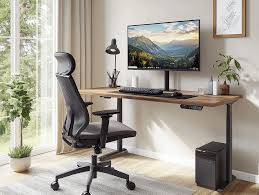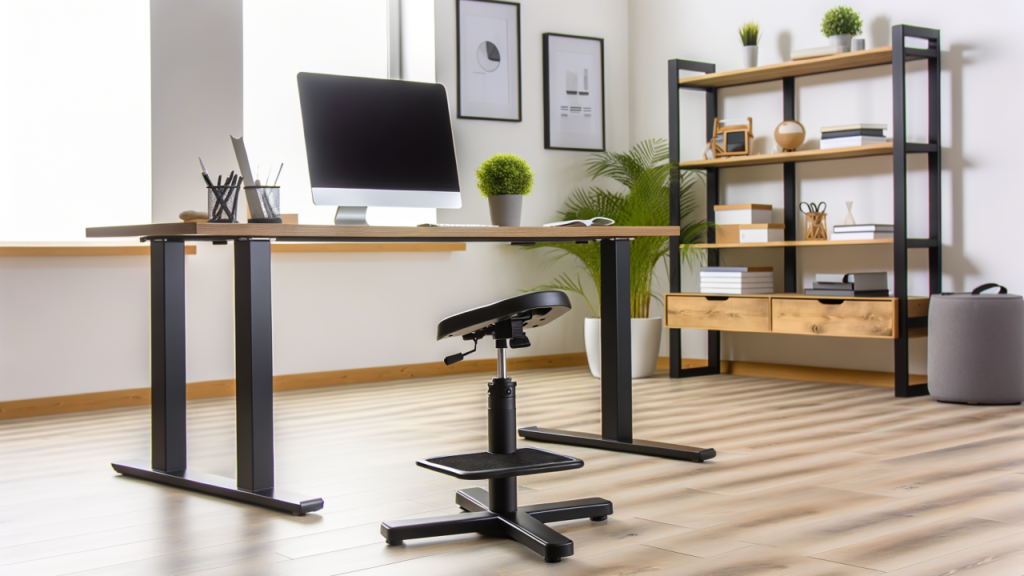The way we work has changed dramatically in recent years. With more people working from home than ever before, the demand for ergonomic home office furniture and productivity tools has skyrocketed. As companies embrace hybrid and remote work models, employees are looking for ways to create comfortable, efficient, and professional workspaces at home. This shift isn’t just a passing trend—it’s a new reality that’s reshaping how we think about work and productivity.

In this article, we’ll explore how ergonomic furniture and productivity tools are helping the remote workforce thrive. From adjustable desks to task management apps, these solutions are designed to boost comfort, focus, and efficiency for those working from home.
The Rise of Remote Work
Remote work was already gaining traction before 2020, but the global pandemic accelerated its adoption. Businesses across industries shifted to remote setups to keep operations running. Even as the world has moved past the crisis, many companies have stuck with remote or hybrid models. Studies show that over 40% of employees in the United States now work remotely at least part-time, and this number is expected to grow.
For employees, remote work offers flexibility and eliminates long commutes. However, it also comes with challenges. Without a proper workspace, remote workers often face discomfort, distractions, and burnout. This is where ergonomic home office furniture and productivity tools come in, offering practical solutions to create a workspace that supports both physical health and mental focus.
Why Ergonomic Furniture Matters
Sitting at a kitchen table or slouching on a couch might work for a day or two, but it’s not sustainable for long-term remote work. Poor posture and uncomfortable setups can lead to back pain, neck strain, and even chronic health issues. Ergonomic furniture is designed to support the body’s natural alignment, reducing strain and improving comfort during long work hours.
Key Pieces of Ergonomic Furniture
- Adjustable Desks
Standing desks or sit-stand desks have become a staple in home offices. These desks allow users to switch between sitting and standing, promoting movement and reducing the risks of prolonged sitting. Many models come with programmable height settings, making it easy to find the perfect position for your body. - Ergonomic Chairs
A good office chair is a game-changer. Ergonomic chairs offer adjustable features like lumbar support, seat height, and armrests to fit your body’s unique needs. Look for chairs with breathable mesh backs and cushioned seats to stay comfortable during long workdays. - Monitor Stands and Arms
Staring down at a laptop screen can strain your neck and shoulders. Monitor stands or adjustable arms raise your screen to eye level, encouraging a neutral posture. This small change can make a big difference in reducing discomfort. - Footrests and Anti-Fatigue Mats
For those using standing desks, anti-fatigue mats provide cushioning to reduce leg strain. Footrests can also help by promoting better circulation and supporting proper leg positioning while seated.
Investing in ergonomic furniture isn’t just about comfort—it’s about protecting your health and boosting productivity. When you’re not distracted by aches and pains, you can focus better and get more done.

Productivity Tools for Remote Workers
While ergonomic furniture sets the foundation for a comfortable workspace, productivity tools help remote workers stay organized and efficient. With the right tools, you can manage tasks, collaborate with teams, and maintain a healthy work-life balance.
Top Productivity Tools for Remote Work
- Task Management Apps
Tools like Trello, Asana, and Monday.com make it easy to organize projects and track progress. These apps allow you to create task lists, set deadlines, and collaborate with teammates, ensuring everyone stays on the same page. For solo workers, apps like Todoist offer simple ways to prioritize daily tasks. - Time Tracking Software
Staying focused at home can be tough with distractions like household chores or social media. Time tracking tools like Toggl or Clockify help you monitor how you spend your workday. They also provide insights into your most productive hours, so you can schedule tasks accordingly. - Communication Platforms
Remote teams rely on tools like Slack, Microsoft Teams, or Zoom to stay connected. These platforms support instant messaging, video calls, and file sharing, making collaboration seamless. For async communication, tools like Loom allow you to record quick video updates that teammates can watch on their own time. - Focus and Distraction Blockers
Apps like Freedom or Focus@Will help you stay on track by blocking distracting websites or providing background music designed to boost concentration. These tools are especially helpful for workers who struggle with procrastination. - Cloud Storage and File Sharing
Tools like Google Drive, Dropbox, and OneDrive ensure your files are accessible from anywhere. They also make it easy to share documents with colleagues and keep everything organized in one place.
By combining these tools with a well-designed workspace, remote workers can create a routine that maximizes efficiency and minimizes stress.

The Benefits of a Well-Equipped Home Office
Investing in ergonomic furniture and productivity tools offers a range of benefits for remote workers. Here are some of the top advantages:
- Improved Physical Health
Ergonomic setups reduce the risk of musculoskeletal issues, such as back pain or carpal tunnel syndrome. This means fewer sick days and a better quality of life. - Increased Productivity
A comfortable workspace and streamlined tools help you work faster and more effectively. When your environment supports focus, you can accomplish more in less time. - Better Work-Life Balance
Productivity tools help you manage your time, so you can set clear boundaries between work and personal life. This is crucial for avoiding burnout and maintaining mental health. - Professional Appearance
A dedicated home office with ergonomic furniture creates a polished backdrop for video calls. This can boost your confidence and leave a positive impression on clients or colleagues. - Cost Savings Over Time
While quality furniture and tools require an upfront investment, they can save money in the long run by reducing medical expenses and improving work efficiency.
Tips for Building Your Home Office
Creating an ergonomic and productive home office doesn’t have to be overwhelming. Here are some practical tips to get started:
- Assess Your Needs
Think about your daily tasks and physical requirements. Do you need a large desk for multiple monitors? Are you prone to back pain? Tailor your setup to your specific needs. - Start Small
If budget is a concern, begin with one or two key pieces, like an ergonomic chair or a task management app. You can gradually add more items as needed. - Prioritize Lighting
Good lighting reduces eye strain and boosts mood. Position your desk near a window for natural light, and add a desk lamp for evenings. - Keep It Clutter-Free
A tidy workspace helps you stay focused. Use organizers or cable management solutions to keep your desk neat. - Test and Adjust
Ergonomics is personal—what works for one person might not work for another. Experiment with chair heights, desk positions, and tool settings to find what feels best.
The Future of Remote Work
As remote work continues to grow, the demand for ergonomic furniture and productivity tools will only increase. Companies are recognizing the value of supporting their employees’ home offices, with some offering stipends for furniture or software subscriptions. Meanwhile, manufacturers are innovating to create affordable, stylish, and sustainable products that fit a variety of home environments.
For remote workers, building a workspace that prioritizes comfort and efficiency is no longer optional—it’s essential. By investing in ergonomic furniture and the right tools, you can create a home office that not only supports your productivity but also enhances your overall well-being.
In a world where work-from-home is here to stay, equipping yourself with the right setup is a step toward thriving in the new normal. Whether you’re a freelancer, a corporate employee, or a small business owner, a well-designed home office can make all the difference in your daily work life.
Must Read :- Jayden Daniels Shines as a Potential Star for 2028 Olympic Flag Football






